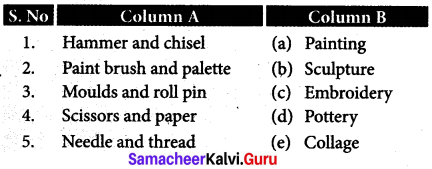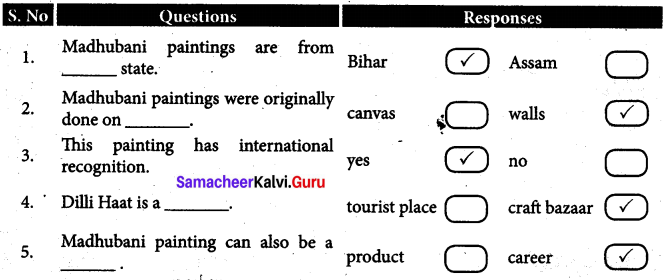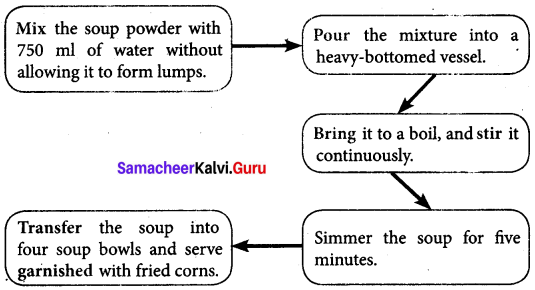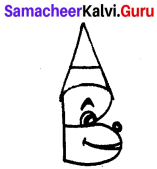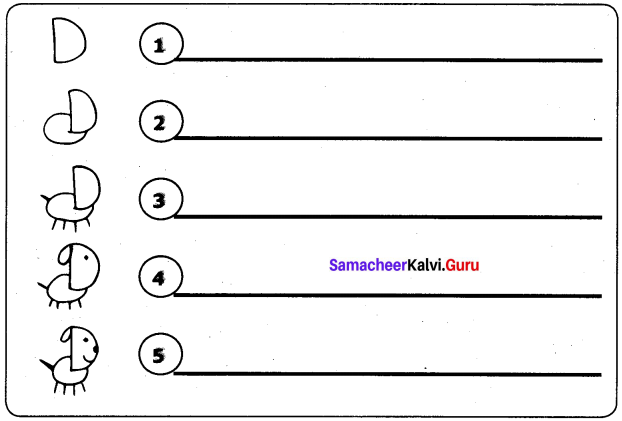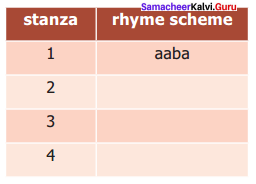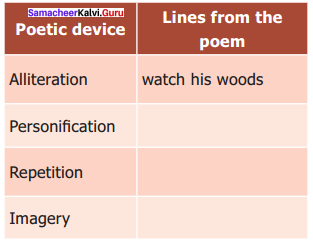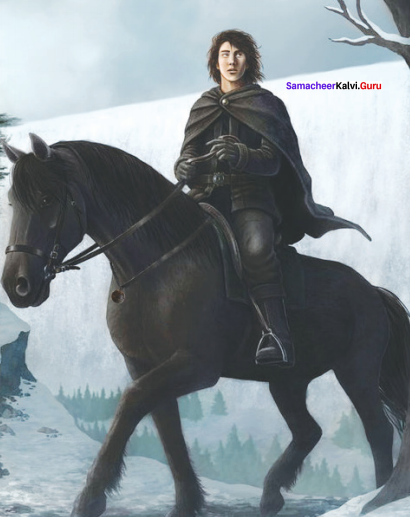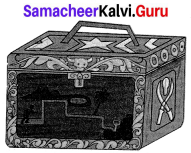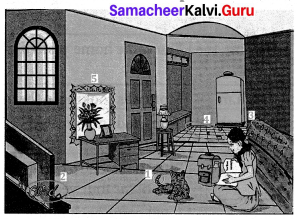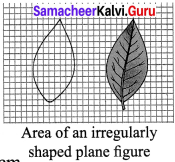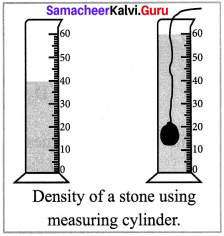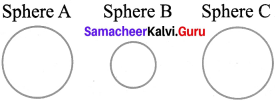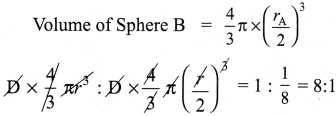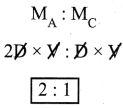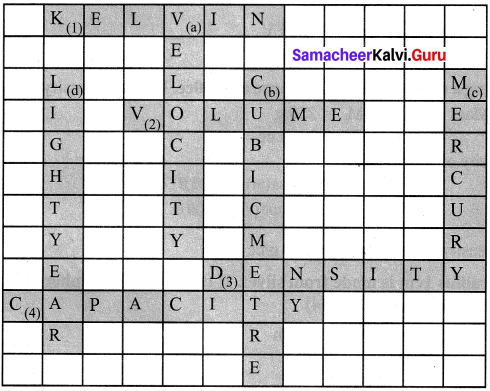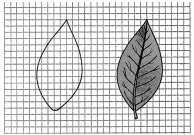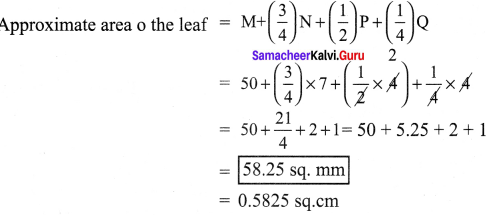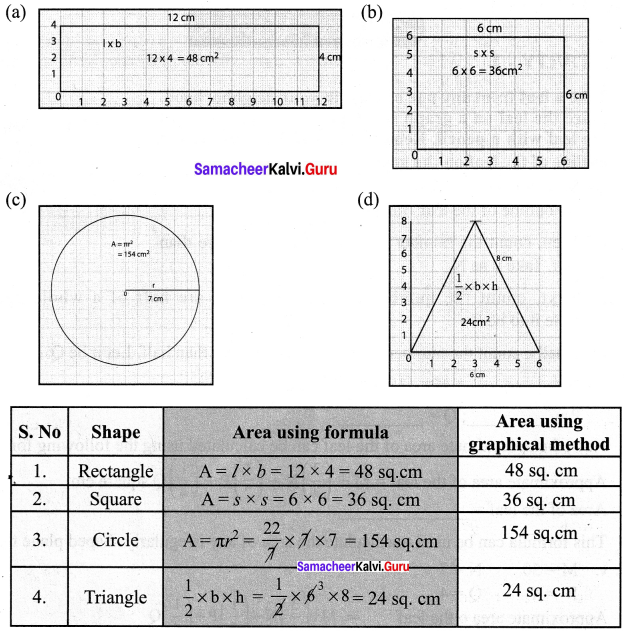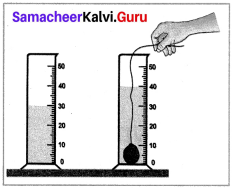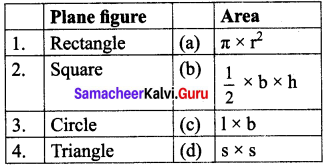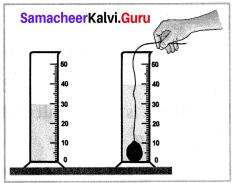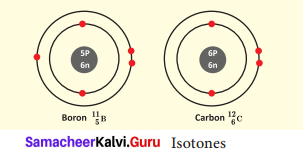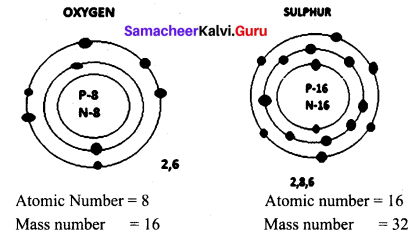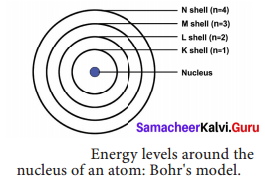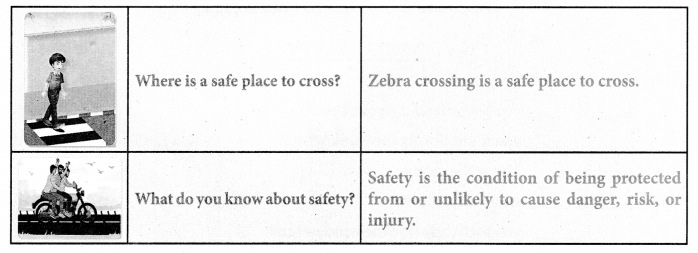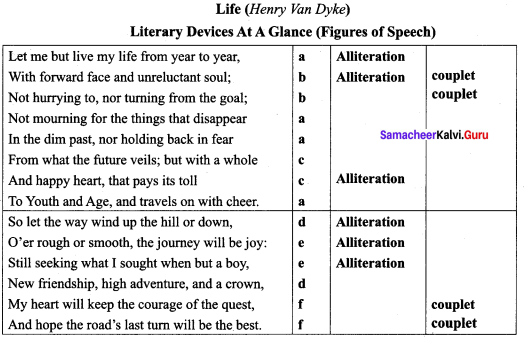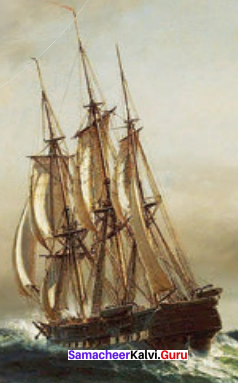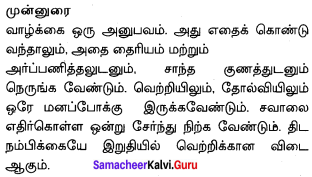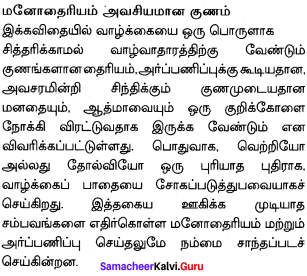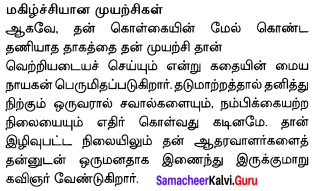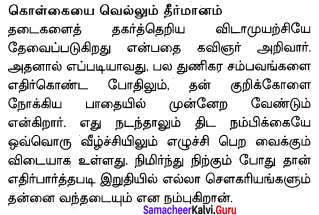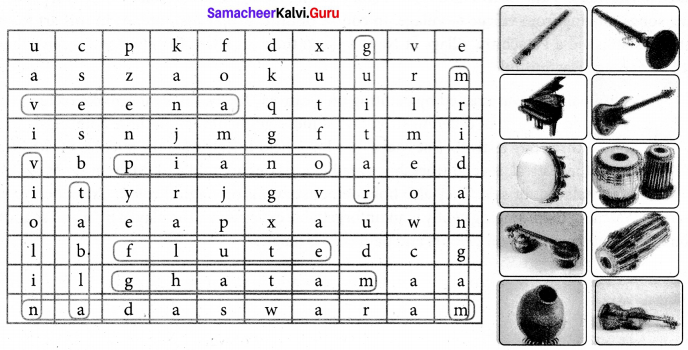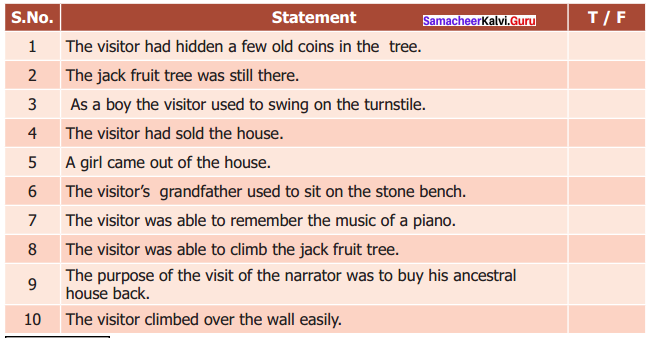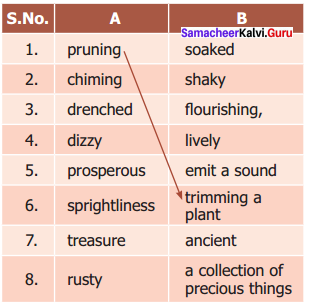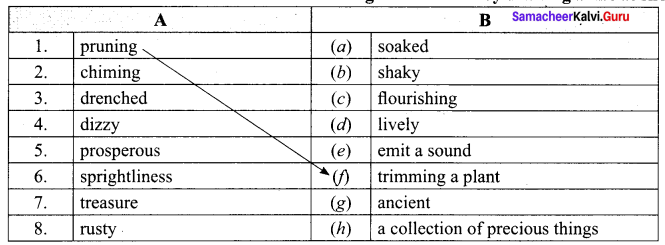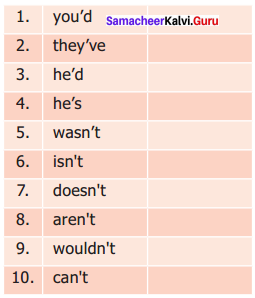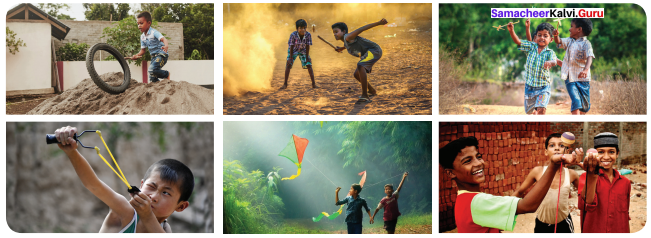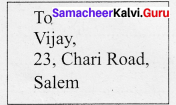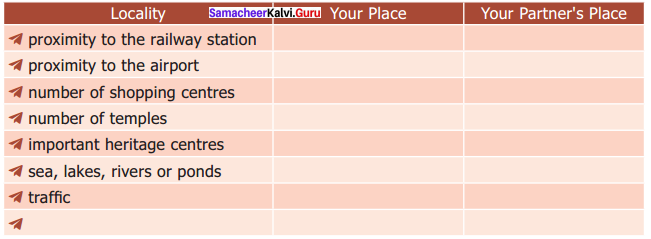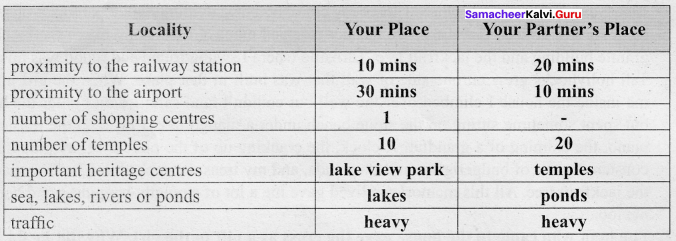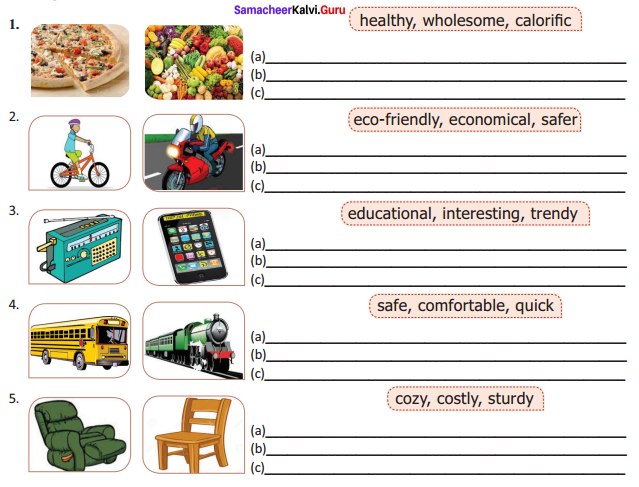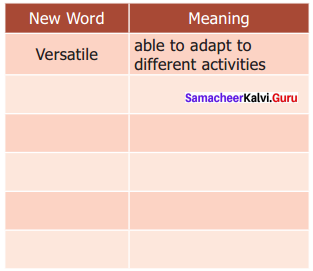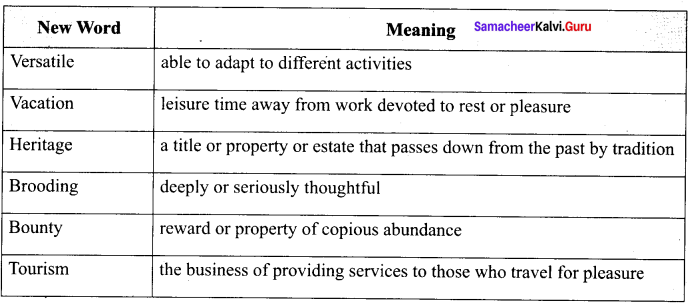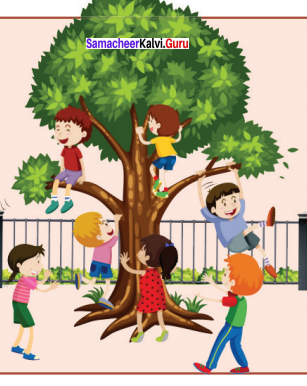Students can Download English Poem 1 The Poem of Adventure Questions and Answers, Summary, Notes Pdf, Activity, Samacheer Kalvi 7th English Book Solutions Guide Pdf helps you to revise the complete Tamilnadu State Board New Syllabus and score more marks in your examinations.
Tamilnadu Samacheer Kalvi 7th English Solutions Term 2 Poem Chapter 1 The Poem of Adventure
Read And Understand
A. Read the lines and answer the questions.
The Poem Of Adventure Question And Answer Question 1.
Deep inside the mountain
the adventures hide themselves.
(a) Where do adventures hide?
Answer:
Adventures hide deep inside the mountain.
The Poem Of Adventure Question 2.
They are of all forms and shapes They all have an excellent ending
(a) What do have an excellent ending?
Answer:
Adventures have an excellent ending.
The Poem Of Adventure Summary Question 3.
when to fight for a righteous cause one did gain considerable applause.
(a) When will one get an applause?
Answer:
If one fights for a righteous cause, one will get an applause.
The Poem Of Adventure 7th Standard Question 4.
And in fighting for their country, faith and king
noble impressions on peoples minds would ring
(a) What does ‘noble impression’ mean?
Answer:
‘Noble impression’ is good opinion’.
(b) Who can leave a noble impression?
Answer:
Knights fighting for their country, faith and the king can leave a noble impression on people’s minds.
The Poem Of Adventure Book Back Answers Question 5.
There are many legends based on their heroic exploits a legacy of tales which have been told with much adroit
(a) What does ‘heroic exploits’ mean?
Answer:
‘Heroic exploits’ means ‘daring adventures’.
(b) What are legends?
Answer:
Legends are traditional stories.
B. Answer briefly.
Poem Of Adventure 7th Standard Question 1.
What is adventure?
Answer:
An Adventure is an unusual, exciting and daring deed.
The Poem Of Adventure 7th Standard Summary Question 2.
Describe the appearance of a knight.
Answer:
A knight is bold and daring. He rides on a horse with a sword or spear in armours seeking romance.
Poem Of Adventure Question 3.
What are the characteristics of an adventure?
Answer:
Adventures hide deep inside the mountains. They have an excellent- ending. They are all forms and shapes.
C. Think and Answer.
The Poem Of Adventure 7th Standard English Question 1.
Why does the poet ask us to imagine that we have tiny wings on our back?
Answer:
The poet asks us to imagine that we have tiny wings on our back, so that we can bounce a bit with joy, when we take a new step towards our adventurous life. He also wants us to imagine that we are clear in mind and feel the wind passing . through us, instead of going against us. You just have to close your eyes and ask them to embrace you. Thus, they would be attracted to be our patterns of habit.
7th English The Poem Of Adventure Question 2.
Why should we fight for righteous cause?
Answer:
Long ago during the age of chivalry, knights used to fight for a righteous cause. They gained a considerable applause for their chivalrous acts. Likewise, we should also fight for a noble cause, so that we could get a good applause from the people of our country. If you fight for your country, people will have good impression about you in their minds. They will hold you in high esteem.
D. Literary Appreciation.
The Poem Of Adventure Line By Line Explanation Question 1.
Pick out the rhyming words. –
Answer:
“Old – bold” lance – romance; cause – applause; chivalry – history; maiden – laden; blows – foes; death – breath; yore – fore; struggle – juggle; king – ring; esteem – seem; exploits – adroit; vice – sacrifice; cause – pause are the rhyming words in this poem.
Summary Of The Poem Of Adventure Question 2.
Write down the alliterated words
Answer:
those-that-their
they – themselves
fighting – for – faith
lessons-learnt
time – take
defying – death
held – high
bounce – bit
virtue – vice
Creative Writing
Concrete Poems
Concrete poems are made up ofwords that have been placed in such a way that they make the shape of an object and also use words to describe the object.
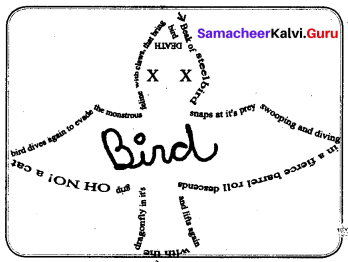
Star,t by making a simple outline of the shape or object (an animal, a football, a fruit etc.) large enough to fill a piece of paper.
Then brainstorm a minimum of ten words and phrases that describe the shape. List action and feeling words as well.
Next, place a piece of paper over the shape and decide where your words are going to be placed so that they outline your shape but also fit well together.
Separate words and phrases with commas.
E. Now read the poem and pick out the nouns. Then write your own concrete poem
Answer:
Nouns
- Bird
- Beak
- Claws
- Prey
- Barrell
- Dragon fly
- Grip
- Cat
- Feline
- Roll
Hot Air Balloon
From down
below I wave hello
to a man standing in
a basket, a basket hang-
ing from a balloon, a ball-
oon filled with hot air
that keeps it pre
cariously,
scario
us
ly
al
oft
The Poem of Adventure Additional Questions
I. Poem Comprehension:
The Poem Of Adventure Full Poem Question 1.
To attract the adventures into the patterns of habit
you only need to close your eyes
and ask them to embrace you.
(a) What can be taken into the patterns of habit?
Answer:
Adventures can be taken into the patterns of habit.
(b) What should you do to make adventures to embrace you?
Answer:
You should close your eyes and ask them to embrace you.
The Poem Of Adventure Poem Question 2.
Back in the days of old
when knights were bold
who with a sword or lance
in armour sought romance.
(a) When were the knights bold?
Answer:
In olden days, the knights were bold.
(b) How do they go on a horse?
Answer:
Vuiva They go on with a sword or a lance.
(c) What did they seek?
Answer:
They sought romance.
(d) What does the word ‘lance’ mean?
Answer:
It means ‘a long weapon with a wooden shaft and pointed steelhead.
II. Poetic Devices:
The Poem Of Adventure Lines Question 1.
in a one to one combat defying death as crowds watched with abated breath.
a) Pick out the rhyming words in the lines.
Answer:
death – breath are the rhyming words.
b) Pick out the alliterated words.
Answer:
defying – death are the alliterated words.
7th Standard The Poem Of Adventure Question 2.
Back in the days of old when knights were bold
a) Pick out the rhyming words in the lines.
Answer:
old – bold are the rhyming words..
b) Pick out the alliterated words.
Answer:
when – were are the alliterated words.
III. Short Questions and Answers.
Question 1.
On whom do the knights strike heavy blows?
Answer:
Knights strike heavy blows on all their opponents and foes.
Question 2.
How do the crowds watch the knights combating their opponents?
Answer:
The crowds watch them with abated breath.
Question 3.
How was the legacy of tales told by the people?
Answer:
The legacy of tales were told with much skill and cleverness.
Question 4.
Should we pause, when we are acting with chivalry?
Answer:
No, we should not pause when we are acting with chivalry.
IV. Paragraph Question with Answer.
Question 1.
Describe the knights daring activities according to the poet?
Answer:
In olden days, knights were bold. They used to ride on their horses with a sword ora lance in armour. During their age of chivalry, knights fought their opponents for a righteous cause and gained considerable applause. Knights regarded themselves as being worthy of capturing the hearts of some fair lady, which was the most desired prize. They would strike heavy blows on all their opponents, as the crowds watched them in suspense. They were held in high esteem by the people.
Warm up
Look at the picture. Name the activities.

Discuss and Answer.
Question 1.
What are the adventure activities of NCC?
Answer:
Mountain Treks, Parasailing, Scuba diving, Kayaking.
Question 2.
When can you join the NCC?
Answer:
I can join the NCC after completing 12 years.
Question 3.
What is the motto of NCC?
Answer:
The motto of NCC is to provide a suitable environment to motivate the youth to take up a career in the Armed forces.
Think and Answer.
Question 1.
Why do we need adventure in life?
Answer:
We need adventure to be confident, decisive and self-aware.
Question 2.
Do you like adventures? Why?
Answer:
Yes, I like adventures because they are thrilling.
Question 3.
Why does the NCC conduct adventure activities?
Answer:
NCC conducts activities to tone leadership skills and to enhance their character qualities.
The Poem of Adventure Summary
In this poem, the poet George Krokos relates to the Adventures of the knights. Adventures are hidden deep inside the mountains in all types of forms and shapes. The adventures have an excellent ending. People, who take up adventures in their life, see the world in an extraordinary special way. They feel that they have little wings on their back and whenever they take a new step, they bounce in joy.
In the olden days, knights were daring and chivalrous. They rode on their horses with a sword or spear and fought their opponents for a just cause. They regarded themselves as worthy of winning the hands of their fair ladies as a valuable prize for their valour. They impressed the crowd by fighting with their opponents. Even today, people talk with much applause about the brave adventures, deeds of the knights.
